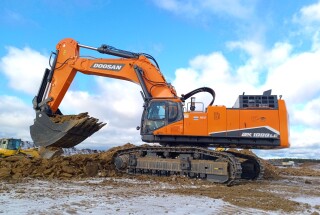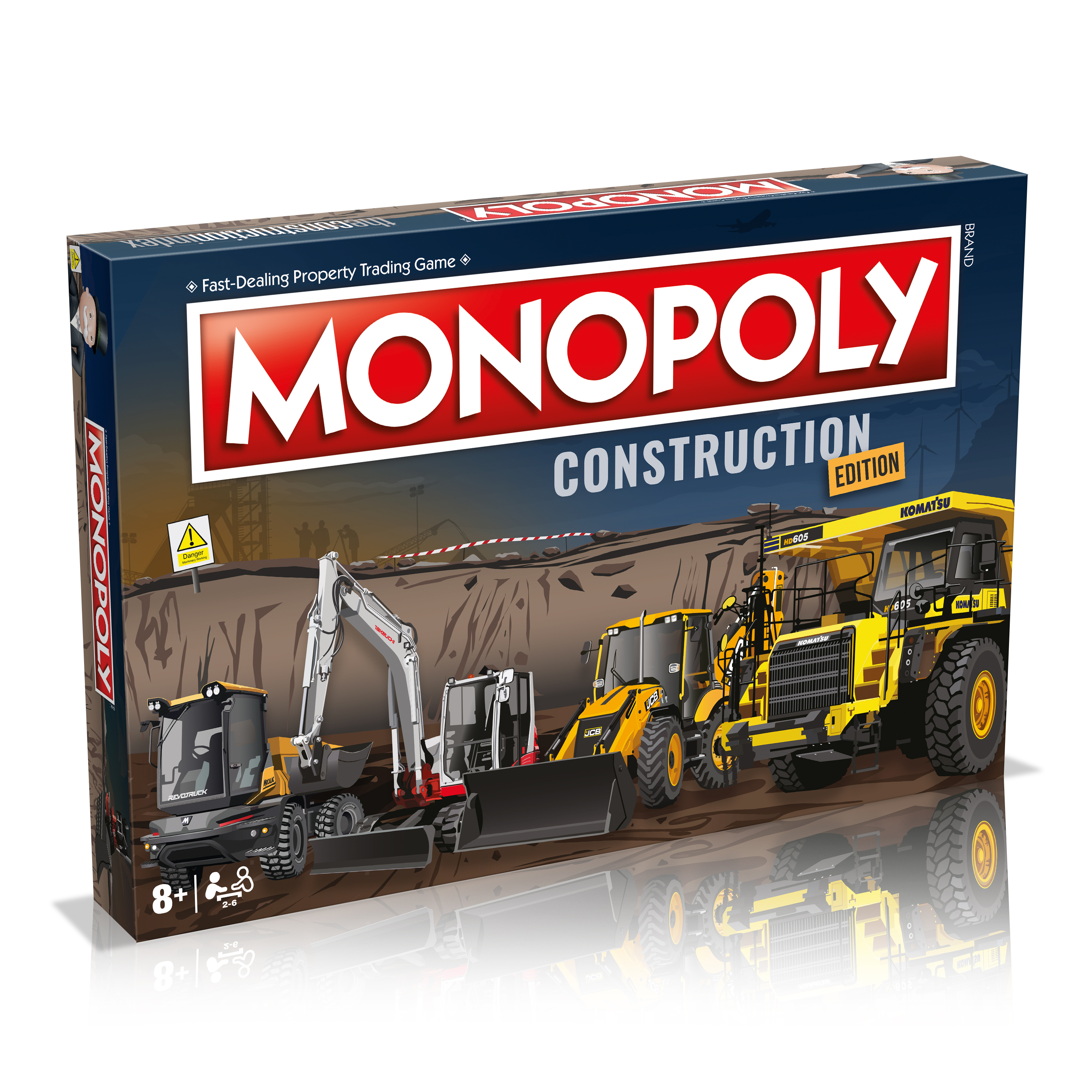You may have read in our news pages that, as a consequence of it being taken over by Hyundai, the Doosan brand is being dropped and replaced with the new name Develon. They say the name Develon comes from ‘develop’ and ‘onwards’ but I reckon its Develon as in ‘devil on horseback’, somehow evoking Ferrari imagery. Maybe.
Anyway, the first Doosan/Develon DX1000LC-7 in Europe began work on 31st January 2023 at an oil shale mine at North Kiviõli in Estonia, run by Kiviõli Keemiatöötus (KKT), part of the Alexela Group.
As well as being the first in Europe, the Estonia machine is one of 35 that have so far been built and shipped from the Gunsan factory in South Korea.
The DX1000LC-7 was supplied to KKT by Intrac Group, the Doosan sealer for the Baltic region.
“Equipped with a six-cubic-metre rock bucket for direct extraction work, the DX1000LC-7 at the oil shale mine provides the lowest fuel consumption available in the 100-tonne excavator market,” says Stephane Dieu, excavator product manager at Doosan Infracore Europe. “The average fuel consumption is 45 litres per hour and with the production target set to around 1200 tonnes per hour, that provides a very impressive yield of 26 tonnes for each litre of fuel used."
The new excavator has joined existing 80- and 50-tonne Doosan dash-7 models at North Kiviõli – a DX800LC-7 and DX490LC-7. Both have completed 7,000 operating hours over the past two years and work alongside a number of other 80-tonne machines at the mine.

The DX1000LC-7 excavator is powered by the Stage V version of the Perkins 2806J diesel engine, providing a power output of 469 kW (629 HP).
Estonia discovered more than 100 years ago that the stone at the North Kiviõli mine contained oil and has been extracting it ever since. In fact, the oil shale industry there is one of the most developed in the world. In 2018, oil shale accounted for 72% of Estonia's total domestic energy production and supplied 73% of Estonia's total primary energy.
The process to obtain the oil remains unchanged. First the stone is taken out, after around eight cubic metres of overburden is removed, providing around one cubic metre of oil shale.
Different techniques are used to remove the overburden. There is blasting, and then loading trucks with the 80- or 100-tonne excavators. A second method uses a 50-tonne excavator equipped with a breaker and a larger excavators for loading trucks. The third method is an 80-tonne excavator, equipped with a vibrating hydraulic ripper (Xcentric) and another 80-tonne excavator equipped with a bucket to load trucks.
After removing the overburden, the extraction of the oil shale starts, again using different techniques. These include direct use of an excavator to load a truck or using a surface miner to extract the precious material, crush it and load it into a truck at the same time. The transformation process to produce oil from the stone begins with the stone being crushed and then loaded into a reactor unit, where it is heated to between 400 to 800 oC depending on the size. As well as oil, phenol is also removed from the stone. Overall, the process takes around two hours. Generally, 1kg of stone can be 20% to 30% oil.


